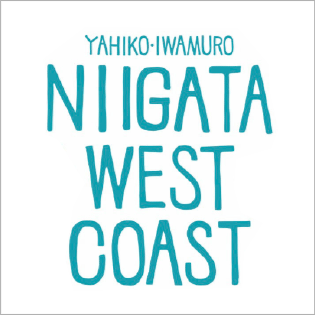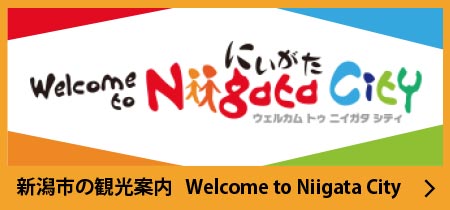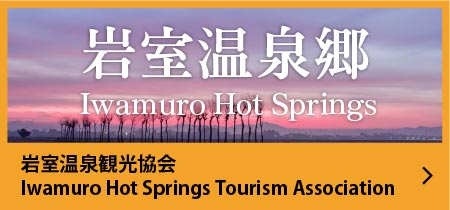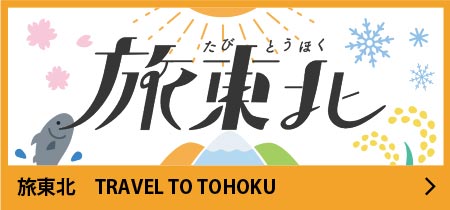
Round-table Chat: Nishikan Ward, Cuisine, and Wara Art
Have you heard about the Wara Art Festival held every year
between summer and fall in Nishikan Ward, Niigata City? This
local festival shines on Instagram, and its huge, unique straw
sculptures receive many inquiries from abroad.
In order to experience the festival’s true charms, understanding
the festival location of Nishikan Ward will heighten your
enjoyment. In addition to mountains, the sea, and paddy fields,
Nishikan Ward, Niigata City also has diverse highlights
including Important Cultural Properties, traditional buildings,
numerous hot spring hotels, and more.
Four young people were assembled to discover hints for enjoying
Wara Art and Nishikan Ward. It began with a fun round-table chat
where they enjoyed local cuisine and alcoholic beverages at
Takashimaya, the top venerable ryokan inn and ryotei restaurant
in Iwamuro Onsen in Nishikan Ward.
Reporting and
text: Annie Fuku, Photographs: Keita Tamamura, Editing: Kohei
Sasaki (CINRA. inc,)
-

Ben Davis
An Australian editor living in Tokyo who loves Japan, traveling, and art. He works on regional research projects from the perspective of sustainability and town revitalization.
-

Yuta Sueyoshi
He is enrolled in the Department of Design Informatics at Musashino Art University. He first participated in the Wara Art Festival in 2018 in the Monkey Group, and plans to also participate in 2019.
-

Kaori Watanabe
Born and raised in Nishikan Ward, Niigata City, she has experience working as a waitress at a hotel in the Iwamuro Onsen district. She is married to a rice farmer and currently works in the family profession of rice cultivation.
-

Takuya Watanabe
He is the manager of the Sightseeing Exchange and Chamber of Commerce, Industry Sightseeing Section, Niigata City, Nishikan Ward Office. He began working on the Wara Art Festival in 2015. He loves alcoholic beverages made in Niigata.
From the hot springs to the sea to the rural landscapes, Nishikan Ward offers diverse sights
Takuya Watanabe (Watanabe hereafter)Thank you for coming to Nishikan Ward on this snowy day. I heard that this is Ben’s first time in Nishikan Ward, so what is your impression?

Starting with a toast!
Ben Davis (Ben hereafter):I have
been to Tsubame Sanjo, the station nearest to Nishikan Ward on
the Shinkansen. It was midsummer at the time, and everywhere I
could see was filled with the greenery of the paddy fields and
mountains. It was absolutely beautiful and left a deep
impression on me.
I came from Tsubame Sanjo today as
well, but I enjoyed completely different scenery because in
winter the paddy fields have all been harvested.
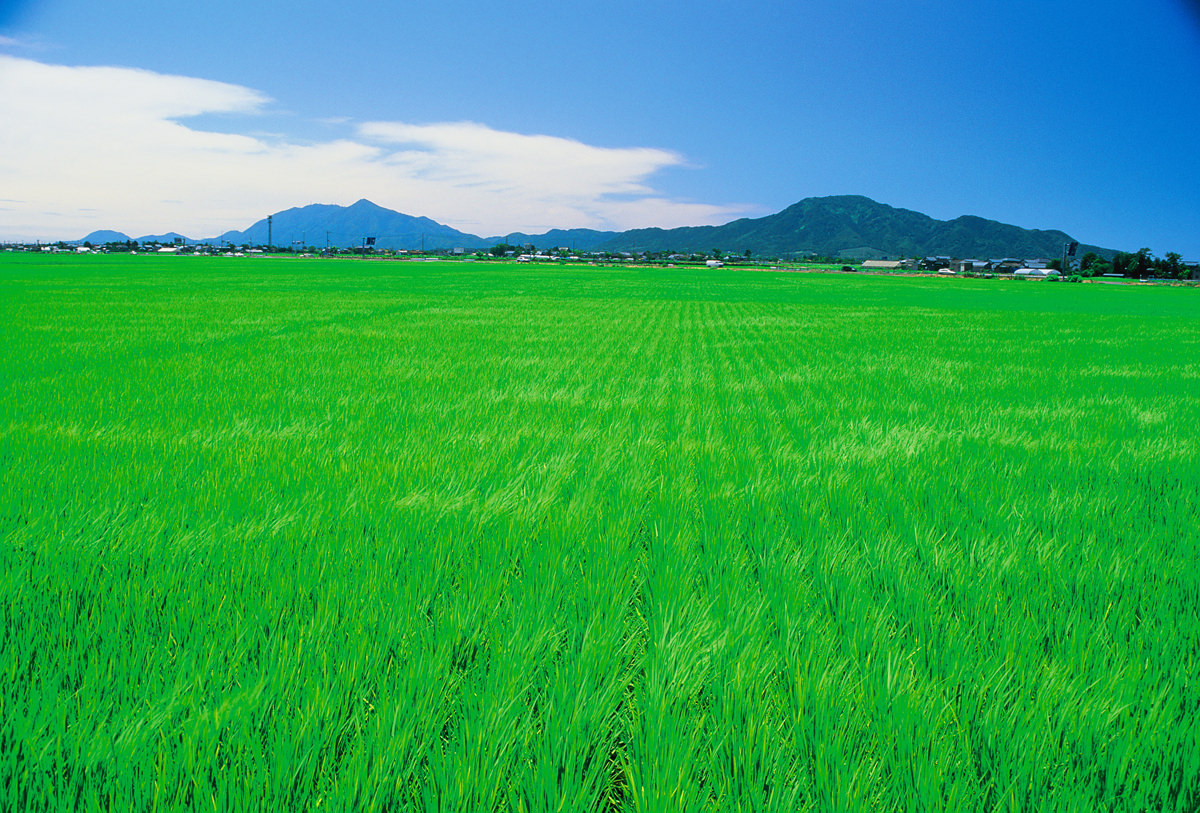
Nishikan Ward’s paddy field scenery in summer
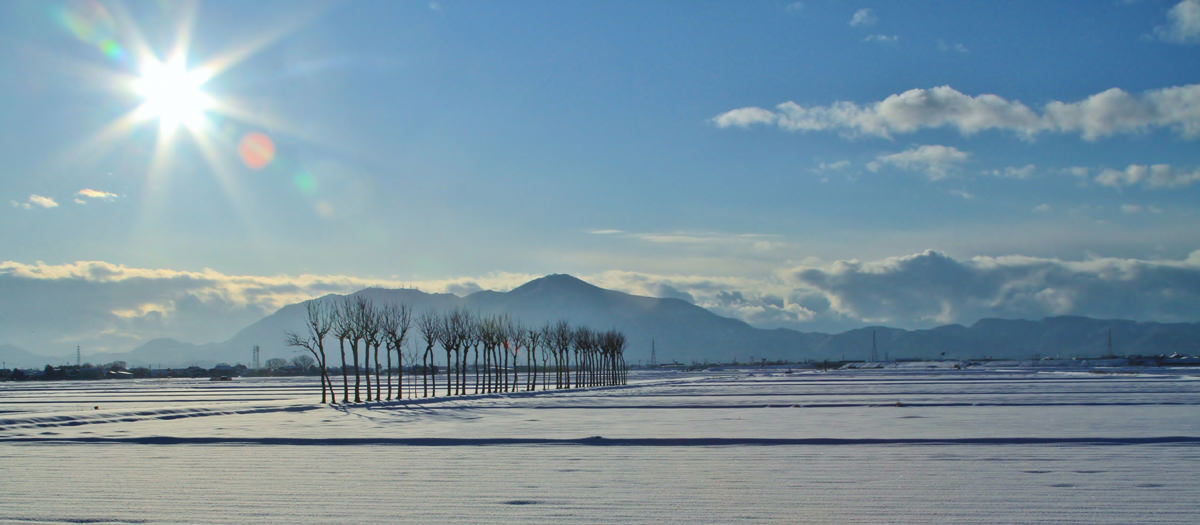
Nishikan Ward in winter
Ben: I visited several of Nishikan
Ward’s famous places this morning. It’s interesting that there
are so hot spring hotels at the base of the mountains. There is
a lot of traditional architecture with the atmosphere of a
ryokan inn.
When I crossed the mountains by car, I
saw the vast Sea of Japan and beach before my eyes. I was
surprised that the sea is so close.
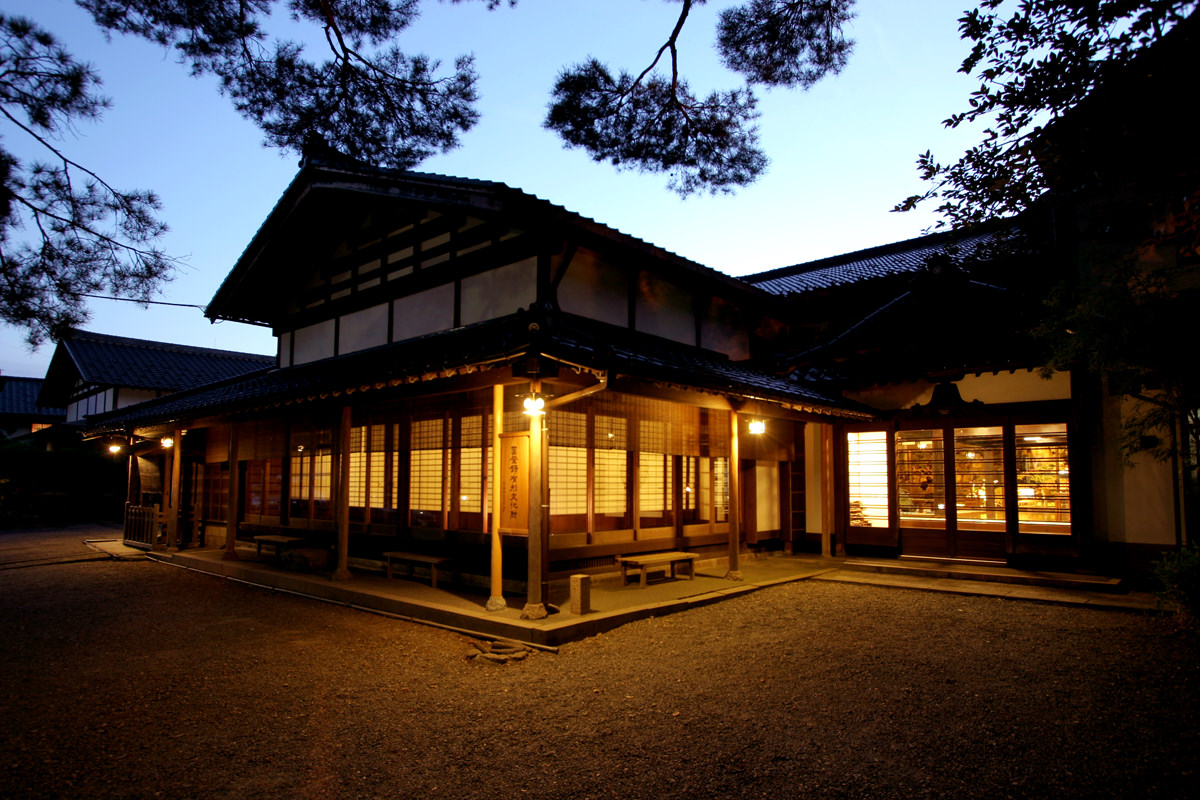
Iwamuro Onsen Koshi no Yado Takashimaya
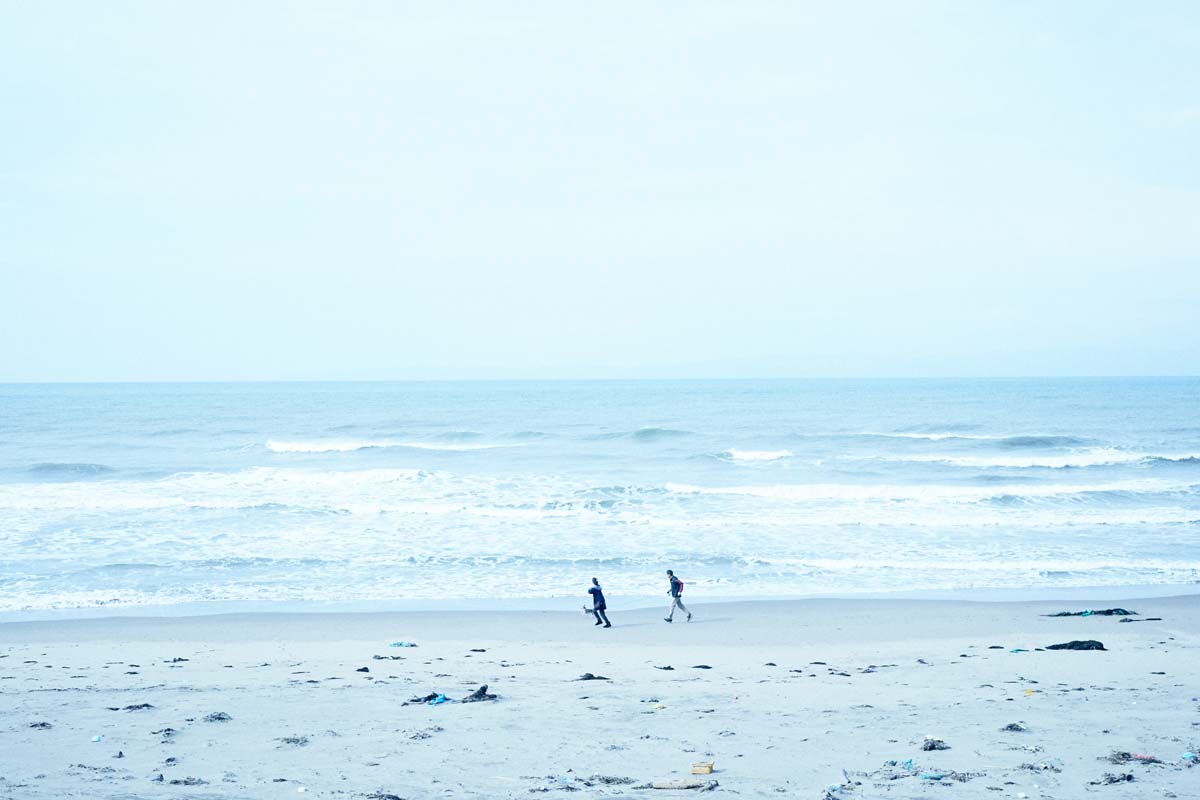
Urahama Beach Swimming Area (Nishikan Ward)
Kaori Watanabe (Kaori hereafter): You see vast rural landscapes when you come to Nishikan Ward, so it’s surprising to see the scenery of the expansive beach just past the mountains.

Cap: Ben Davis (inner left), Kaori Watanabe (front left), Yuta Sueyoshi (inner right), and Takuya Watanabe (front right)
Watanabe: Sueyoshi-san, you stayed in Nishikan Ward during the creation of the Wara Art last summer. How is it your second time?
Yuta Sueyoshi (Sueyoshi hereafter):The first time was in summer, so I was surprised to see the completely different scenery in winter. Today I saw Uwasekigata Park, the venue for the Wara Art Festival, and I felt very nostalgic remembering the difficult time when the art was being created.

Photograph of the Wara Art Festival in 2018

Photograph of the Wara Art Festival in 2018
Sueyoshi: I’m from Miyazaki
Prefecture, which is a warm area of Japan, so this was my first
time seeing the Sea of Japan in winter. This is my first time
seeing snow in my whole life.
Nishikan Ward has
completely different scenery and atmosphere from other regions
in Japan. Seeing Nishikan Ward’s scenery open up before you all
the way to the horizon is truly wonderful.
How did the Wara Art Festival begin?
Ben: I love art so I was looking forward to today. What are the origins of the Wara Art Festival?
Watanabe: Nishikan Ward is an area with quite high rice harvests even for Japan. Using the inawara rice straw, Musashino Art University students and Nishikan Ward residents create giant artworks. Last year they made five sculptures, and the largest measured over five meters tall.

Artwork from the Wara Art Festival in 2018
Watanabe: That is displayed at the venue of Uwasekigata Park, and the Wara Art Festival is held at the end of August. In addition to exhibiting the artworks, the Wara Art Festival also has sales of Nishikan Ward’s agricultural products, straw crafts-making experiences, and more. Although the festival itself is only one day, the Wara Art sculptures are displayed as-is for about two months afterwards.

Artwork from the Wara Art Festival in 2017
Ben: What prompted beginning to create Wara Art?
Watanabe: Originally, an event
called “Art Site Iwamuro Onsen” was held with the cooperation of
Nishikan Ward and Musashino Art University using several hot
spring hotels as the venue in Iwamuro Onsen, where this ryokan
(Takashimaya) is located.
When Musashino Art
University professors were consulted about wanting to hold a new
event, they brought up the Snow Festivals where mountain-like
snow sculptures are created in Sapporo City in Hokkaido and
Tokamachi City in Niigata Prefecture.
Making Wara
Art began when it was suggested that it would be interesting to
create artworks using the large amounts of rice straw in the
paddy fields, which cover roughly half the area of Nishikan
Ward.

Ben: Ben: Since it began in 2007 and it’s now 2019, it has been 13 years.
Watanabe: That’s right. The artworks were created in the rice paddies at first, but as they gradually garnered attention and their scale began to grow, the location has been changed to Uwasekigata Park, a large park in Nishikan Ward.
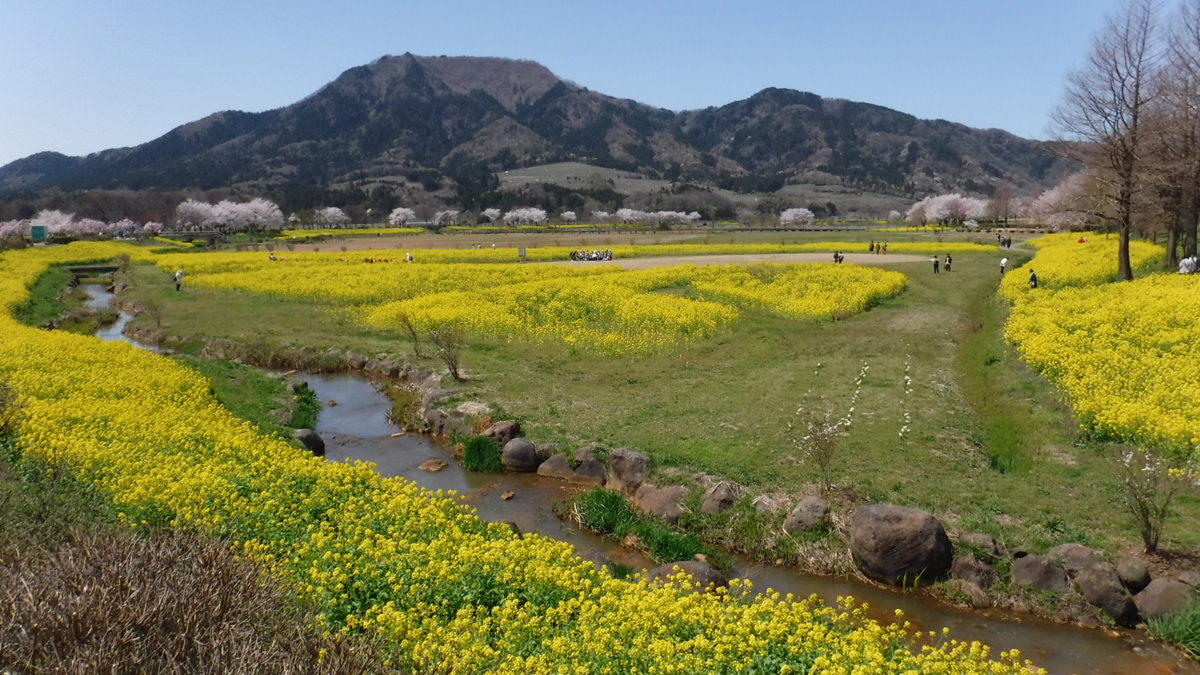
Uwasekigata Park
Watanabe: Watanabe: The student
members at Musashino Art University who make the artworks change
yearly, but their expertise and knowhow is passed on so the
level increases every year.
They create animals and
dinosaurs that are very difficult to make, and float duck and
squid sculptures in water. The progress in quality and their
spirit to challenge themselves has been terrific over the years.

Artwork from the Wara Art Festival in 2016
With some gigantic sculptures at over 5 meters tall, what is the secret to making Wara Art?
Ben: Sueyoshi-san, why did you want to participate in making Wara Art?
Sueyoshi: I wanted to try something
when I entered Musashino Art University, and when I saw a poster
for Wara Art posted in the school, I thought it was really cool.
Only freshmen and sophomores can participate, and
there are many students who participate from departments such as
oil paintings, industrial arts, and design informatics.

Watanabe: There are not many
opportunities for the arts students to create such large
artworks, so there seem to be many people who are interested.
Because it has continued for 12 years, it has been
recognized by the students and we now receive applications for
more than the capacity. In the past, we somehow managed to
assemble students with ads saying, “Stay at a hot spring!” and
“You can eat delicious rice!” (laughs).
Sueyoshi: That’s how it was
(laughs). Last year, we decided the members and group
composition in spring and came up with the ideas. We thought
about what is unique to the shapes of Wara Art, made sketches,
and polished them.
If we decide on an animal, we
first make a clay model, and then make a model frame using thin
sticks.

Creating artwork for the Wara Art Festival in 2018
Watanabe: We then have local contractors make a full-size frame based on the model frame. But it seems that sometimes students see them and say that they’re entirely different from what they imagined.
Sueyoshi: That’s true (laughs). Last
year when I was group leader for making the monkey artwork, one
of the joints in the arm was missing and we had it remade.
We also add pipes to the framework and make
adjustments and create animal-esque roundness. Then we make the
artworks using rice straw.

Creating artwork for the Wara Art Festival in 2018
Watanabe: Watanabe: Each piece of
rice straw is thin and unraveled, and it cannot be used to make
the frames as-is.
For this, we turn to a volunteer
group known as the “Apron Corps” formed by local Nishikan Ward
older ladies to help the students. They hand-weave the straw one
piece at a time, preparing Toba-Ami sheet shapes of rice straw.

Toba-Ami made by the Apron Corps
Kaori: I married into a rice cultivation family. We grow rice in a rice paddy near here and provide rice straw for the Wara Art. We also cultivate rice with local elementary school students that we would like to be used for Wara Art.

Sueyoshi: Oh, really? Last summer, there was a day when I thought, “It’s too hot today and all I can eat is somen noodles.” Somen noodles were made for me that day and I remember being very happy.
Kaori: I think she was also happy (laughs). Traditional Toba-Ami is a difficult technique primarily passed down by the local women, and now only the older ladies can do it. The older ladies also truly enjoy the exchange with the young arts students from Tokyo.
Watanabe: The students return to Tokyo after the Wara Art creation is finished, but some of them receive letters every month from the older ladies and go to visit again after they graduate, and a bond begins between them.
Kaori: It’s a wonderful exchange. I would like it to continue forever.

Artwork from the Wara Art Festival in 2016
Ben: It seems that Wara Art has been spreading throughout Japan nowadays.
Watanabe: Creation of Wara Art is beginning in Hokkaido, Fukuoka, and Yamaguchi. Even overseas, there are places in Australia that are challenging themselves to create Wara Art. We want to excite people and appeal to them because Nishikan Ward is the originator of Wara Art.
From fresh fish, vegetables, and alcoholic beverages to deeply local foods
Ben: By the way, this beer is very smooth and delicious.

Motoko Takashima, the proprietress at Takashimaya

Proprietress: Yes. It’s a craft beer called “Swan Lake Koshihikari Beer” made using rice (Koshihikari) cultivated in Nishikan Ward.
Kaori: I also sometimes drink it. Instead of being 100% wheat, it also contains rice so it has a wonderful aroma and flavor. Nishikan Ward is a rice-producing area so there are also numerous sake breweries here.

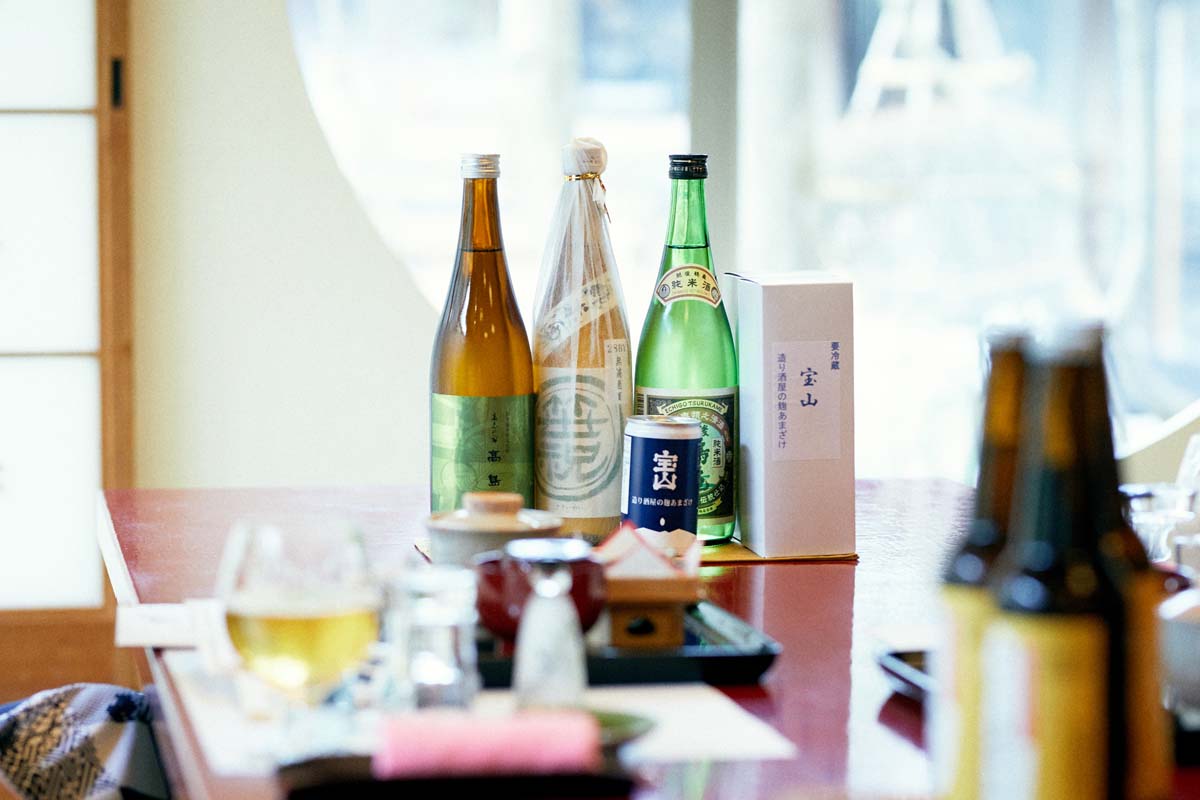
Sake
Ben: I actually took a tour of one today. It was an old place called Takarayama Sake Brewery, and the proprietress happened to be there and kindly gave me a tour. She had a cheerful personality so I heard many fun stories. I received a great impression so I’d like to go again.
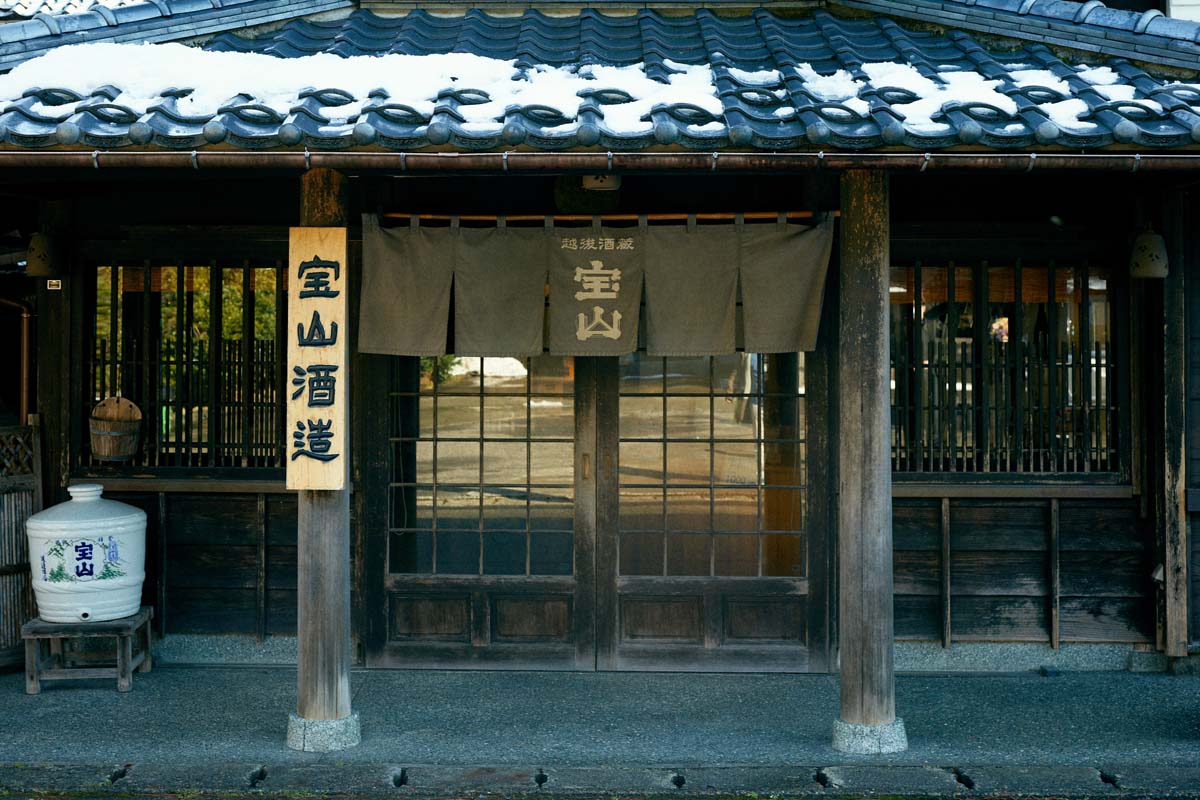
Takarayama Sake Brewery

The Takarayama Sake Brewery proprietress gives an explanation of sake on the tour (please make prior reservations for tours)
Kaori: The proprietress is beautiful.
The secret to beautiful skin is sake, you know. It’s said you
should apply sake to your face everyday and take a bath.
The
Takarayama Sake Brewery has a long history in Nishikan Ward.
It’s been used as the set for a movie and is very famous.

Takarayama Sake Brewery
Ben: That’s interesting. If you talk to local people like that, you make many discoveries that you wouldn’t learn in a guidebook, which makes you want to know even more about Nishikan Ward. It was a great chance to learn about Japanese culture.
Proprietress: I’ll give you a little explanation of the cuisine in this area. There are many customers who come to Nishikan Ward for the seafood, so there are menus that allow you to enjoy locally-caught fresh fish.

Side dishes for alcoholic beverages (clockwise from top: tabane katakuchi iwashi (bundle of Japanese anchovies), tokobuji sakamushi (steamed abalone with salt and sake), managatsuo nanbanzuke (marinated fried Japanese butterfish), and unohana taki (cooked soybean pulp).

Ehomaki sushi roll
Proprietress: Winter is the season for blackthroat seaperch, so I cooked it today in the shioyaki salt-grilled style. The blackthroat seaperch in this area are wonderfully fatty and delicious.

Blackthroat seaperch cooked in the shioyaki style
Ben: I haven’t had many opportunities to eat freshly-caught fish from the Sea of Japan, and this is absolutely delicious. The citrus taste of the sudachi fruit complements it wonderfully.
Kaori: Also, the thinly-sliced flounder even moved me as a local person. All of the fish caught near Mase fishing harbor, which is on the seaside of Nishikan Ward where my parents’ house is, are fresh and delicious, but I think this flounder is by far the best. Even its appearance is like art.

Thinly-sliced flounder
Ben: I was also surprised at how intricate the steamed turnip dish is. If you cut it open, you can see the crab as well as trout inside, so you can savor various flavors. It had a smooth texture and was truly delicious. Foreign people like lightly-flavored Japanese food so I would recommend this.

Steamed turnip with trout, lily bulb, and crab
Proprietress: The steamed turnip is grated turnip steamed on top of thinly-sliced white fish. To accompany beer and sake, I recommend the mustard rolls featuring temporarily dried daikon radishes that are stuffed with mustard and pickled.
Ben: They’re not that spicy.

Mustard rolls
Sueyoshi: The mizu yokan red bean jelly for dessert is simple and I was surprised at its texture that felt like it was melting in my mouth.

Mizu yokan. Although it is usually a summer dessert, in the Iwamuro area it is the custom to eat it in winter.
Kaori: Actually, when I told my mother
in law about this media coverage today, she told me to bring
this and have everyone try it. (She takes food out of the
package.)
These are local dishes from Nishikan Ward
called Gogiri and Namagusagoko. They’re so local that even some
young people from here don’t know about them. Would you like to
try them?
Ben, Sueyoshi, Watanabe: Yes, please!
Kaori: Gogiri is made of daikon, carrots, and mackerel boiled in water with sake lees. There are many dishes made with sake lees in the rice-producing area of Nishikan Ward. Do you think it has a creamy flavor?
Sueyoshi: It’s easy to eat with a gentle flavor.

Gogiri
Ben: It has a slightly strong aroma, but it doesn’t have a strange taste. It has a gently creamy flavor. It’s truly delicious local cuisine made by the local people.
Kaori: Namagusagoko will probably give
you quite a shock. It’s tsukemono pickles made only in the
seaside area of Nishikan Ward.
Salt-pickled pilchard
is boiled until it’s muddled, and then raw daikon is pickled in
it for about a year. Its appearance resembles traditional
takuwan pickled daikon, but it tastes entirely like pilchard.
It’s like Japanese-style anchovies, so it would be
good to present it as a specialty of Nishikan Ward.

Gogiri (left), Namagusagoko (right)
Ben: … The difference between the appearance and flavor is amazing! (Laughs.) It looks like regular radish, but it tastes entirely like pilchard. It has a huge impact and I certainly won’t forget it for a while.
Watanabe: I was born and raised in Niigata but this is my first time eating this. It seems like it would go viral on TV and the internet.
The Wara Art Festival and Nishikan Ward will become more and more fun going forward
Watanabe: We wanted to ask you all today how to make Nishikan Ward and the Wara Art Festival more fun for foreign people.

Ben: When I came to Japan from
Australia, I lived and worked with a regional farming family.
That’s when I sensed that all areas of Japan have unique local
characteristics and charms.
I think that many other
foreign people who visit Japan would want to visit places like
Nishikan Ward that they don’t know from guidebooks if they have
interesting initiatives like the Wara Art Festival.
They would enjoy actually going to those places,
having exchanges with the locals, and asking why the locals eat
particular foods and about their culture.

Watanabe: We also need to not only send out information, but also communicate with the people who come here
Ben: The Wara Art Festival already
seems to receive inquiries from foreign tourists and artists,
but it’s also important to provide guidance to the people who
actually come here.
In addition to language aspects
like maps and signs in English, communication is also important.
Even without words, I think it is possible to communicate your
feelings through body language alone.
For example,
when foreign people visiting Nishikan Ward want to speak with
the locals, what words should they know?

Watanabe: Hmm… “Najira ne?” (“How are you?” in the local dialect) is often used in communication.
Kaori: For example, you might ask, “Najira ne?” to a friend you haven’t seen in a long time. The phrase conveys that you’re asking about everything from their job to their health to their daily life.
Ben: How do you respond?
Kaori: It’s used for all situations, so for your health you could respond, “I’m feeling great!” or for your job, you could say, “Everything’s going well.”
Kaori: Also, the word gatto (very) is often used. You can say, “Today’s cuisine was gatto delicious” (laughs).
Ben: Gatto delicious. Many foreign people cannot speak Japanese, so they would like to find opportunities to communicate no matter what words they use. Those words serve as proof that they went to a particular place.
Kaori: Well, if you say “Najira ne?”, the locals would probably be surprised at first, but they would definitely be happy so I hope you use that phrase (laughs).

Ben: Also, the Wara Art Festival is
a truly unique initiative so I think it would be good for it to
spread far and wide and make many connections.
Because combining Nishikan Ward’s history and
culture with art creates a stronger impression and foreign
people enjoy Nishikan Ward’s Art Walk and hot spring district, I
think it would be good to have a walking map for the local
highlights.
Starting with Wara Art, they can also
stay at a real traditional Japanese inn, eat delicious cuisine,
and bathe in a hot spring. Nishikan Ward still has much more
potential and the connection between tourists and locals can be
further deepened going forward.
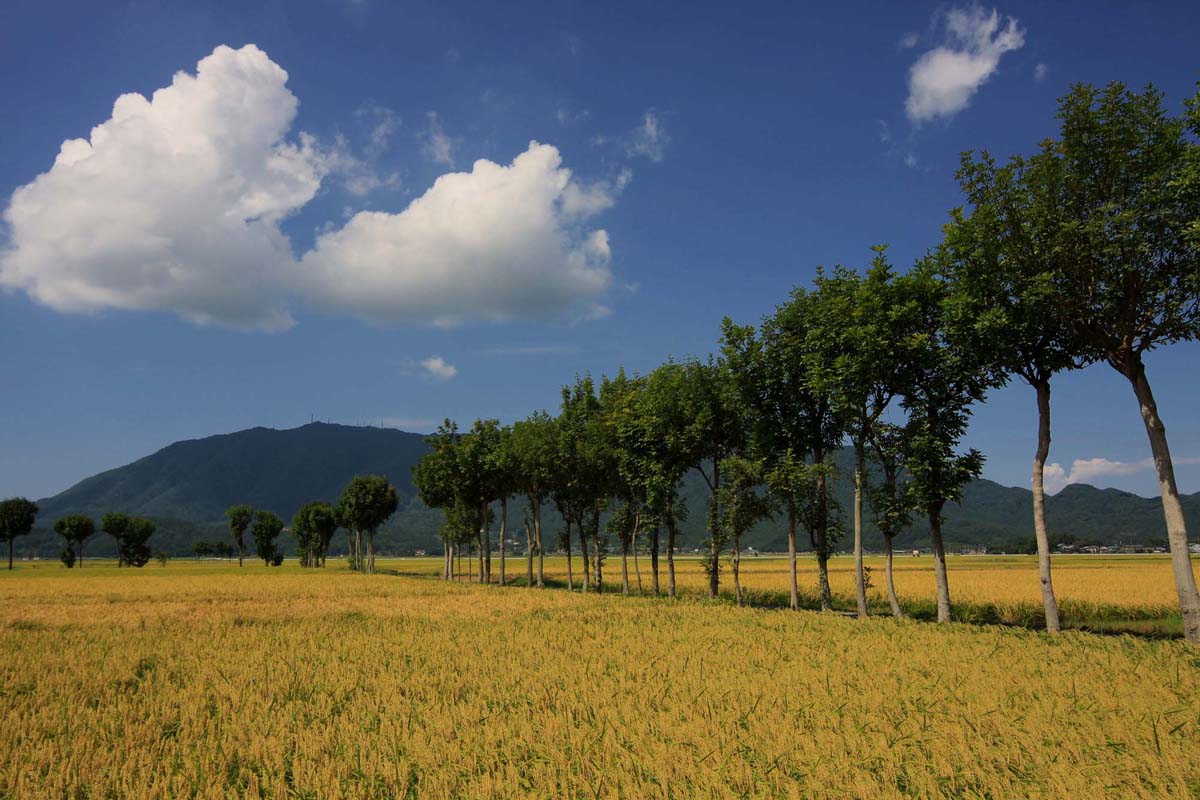
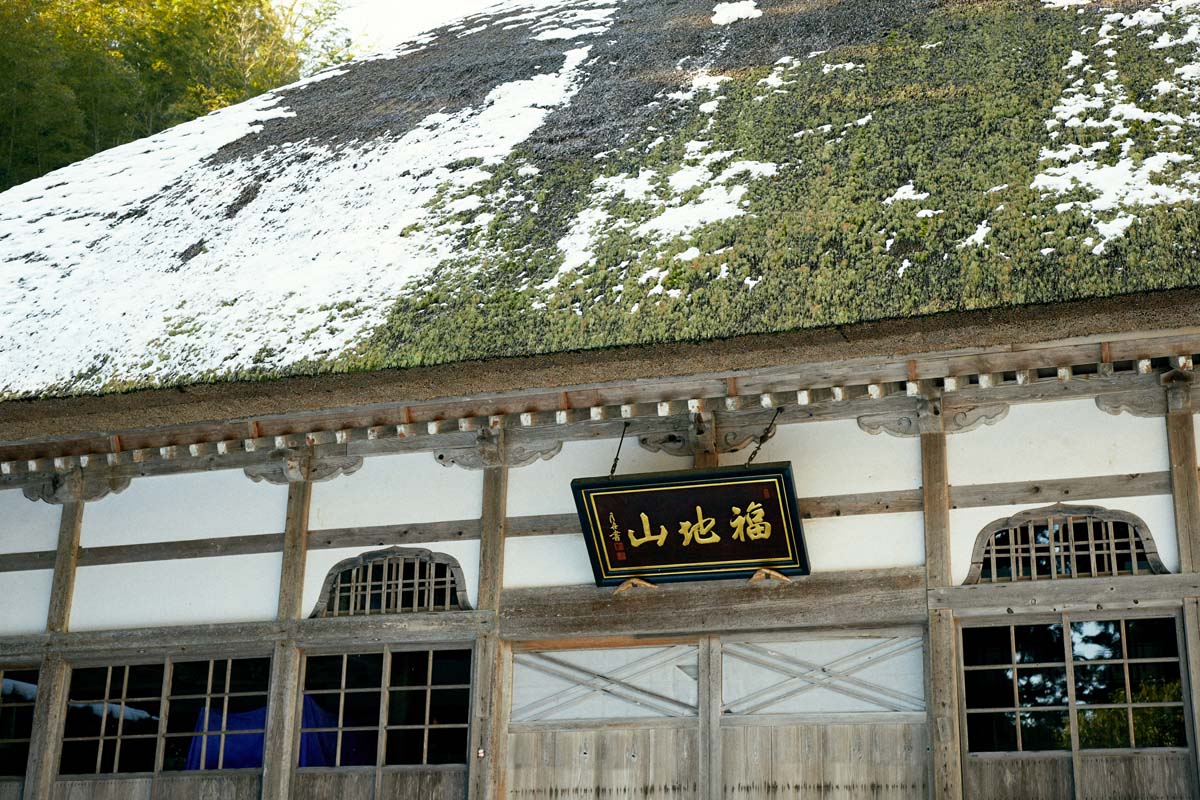
Shugetsu-ji Temple (Nishikan Ward)
Watanabe: There is a permanent exhibition of miniature Wara Art pieces in the Iwamuroya tourism facility, but the sculptures created every year for the festival are taken apart when it is over. I’d like to consider the potential for preserving and an archive for the artworks.
Ben: I agree. And if the sculptures could be installed gradually every year in the town, it would become a sustainable initiative for the town. I think much more could be created from this.

Kaori: I think it is very important to
continue this. The older ladies of the Apron Corps are aging,
and it would be good for them to find people to whom they can
pass on their tradition. I would like this to be a place where
the tradition of Toba-Ami is preserved.
Rice straw
was a very important material for the daily lives of people in
the past, since they used it instead of raincoats, to weave bags
for rice, to make zori traditional sandals, and more.
When I went to the Nishikan Ward museum and sat on a
bench, I realized that the cushions had rice straw instead of
cotton inside. It would be good for the Wara Art Festival to
also introduce traditional aspects of daily life.
Watanabe: Sueyoshi-kun, you are also coming to Nishikan Ward to make Wara Art in the summer of 2019. Is there anything you would like to challenge yourself to do this year?

Sueyoshi: There are many places that
have abundant nature and delicious food in the regions of Japan.
But amongst them, Nishikan Ward has the truly unique Wara Art,
so as an art student I would like to create art of even higher
quality.
And we definitely need to consider the
method of interacting with foreign people. Even when we
communicate on social media, we tend to resonate much more with
foreign people than Japanese people, so we should leverage that
and create even better Wara Art communication. I want to
gradually add new things that can go viral to have diverse
people come here.
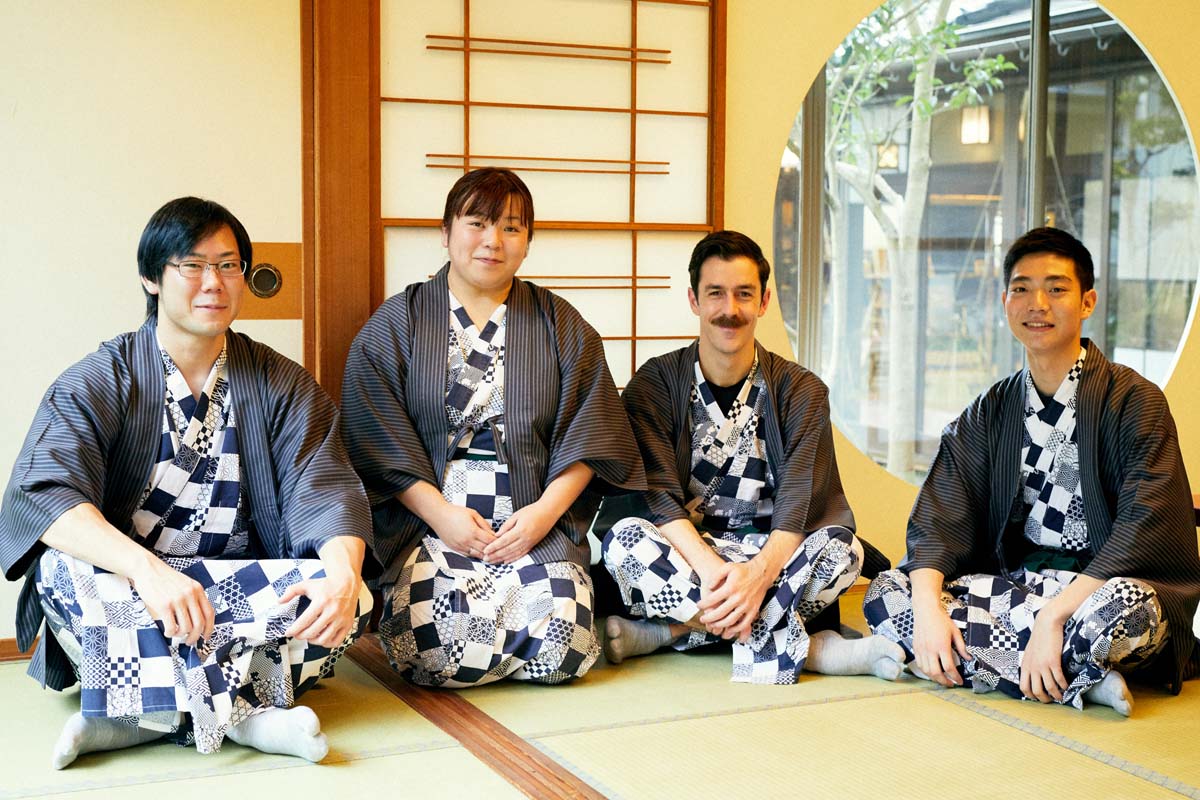
-

These are Ben Davis’ recommendations for Nishikan Ward!
I was moved by the hospitality of the proprietress of the Takarayama Sake Brewery, so I’d like to have another relaxed visit. I was also captivated by the seaside scenery. Many travel-loving foreign people also love the outdoors, so they would enjoy the camping grounds and hiking around Kakudahama Beach.
-

These are Yuta Sueyoshi’s recommendations for Nishikan Ward!
I was left with a deep impression from first seeing the scenery of the Sea of Japan, as well as the scenery of the vast paddy fields. Uwasekigata Park, the festival venue, also has completely different scenery in summer and winter, making it one of Nishikan Ward’s highlights that offers diverse enjoyment throughout the four seasons.
-

These are Kaori Watanabe’s recommendations for Nishikan Ward!
I love Uwasekigata Park. The cherry blossoms and rape blossoms bloom in spring, and the contrast between their pink and yellow petals is absolutely beautiful. Cosmos flowers bloom in fall, and the scenery of the sunset, cosmos blooms, and Wara Art is truly lovely. You can also see many fireflies between the end of June and early July. Looking at photographs doesn’t convey how amazing fireflies are, so I hope people will come see the real ones.
-

These are Takuya Watanabe’s recommendations for Nishikan Ward!
I like mountains, so I recommend Mount Kakuda. You can easily climb it since it’s about 500 meters high, and the trailhead is a sandy beach. It has abundant greenery as well as many lovely blossoms. In summer, you can enjoy the activities of mountain climbing, swimming, and bathing in a hot spring all in a single day.


